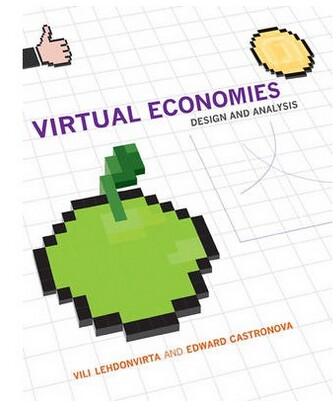
Virtual Economies: Design and Analysis
[Book Description]
In the twenty-first-century digital world, virtual goods are sold for real money. Digital game players happily pay for avatars, power-ups, and other game items. But behind every virtual sale, there is a virtual economy, simple or complex. In this book, Vili Lehdonvirta and Edward Castronova introduce the basic concepts of economics into the game developer's and game designer's toolkits. Lehdonvirta and Castronova explain how the fundamentals of economics -- markets, institutions, and money -- can be used to create or analyze economies based on artificially scarce virtual goods. They focus on virtual economies in digital games, but also touch on serious digital currencies such as Bitcoin as well as virtual economies that emerge in social media around points, likes, and followers. The theoretical emphasis is on elementary microeconomic theory, with some discussion of behavioral economics, macroeconomics, sociology of consumption, and other social science theories relevant to economic behavior.Topics include the rational choice model of economic decision making; information goods versus virtual goods; supply, demand, and market equilibrium; monopoly power; setting prices; and externalities. The book will enable developers and designers to create and maintain successful virtual economies, introduce social scientists and policy makers to the power of virtual economies, and provide a useful guide to economic fundamentals for students in other disciplines.
[Table of Contents]
Acknowledgments xi
1 Introduction 1 (22)
Real business from virtual goods 3 (1)
A new tool for digital design 4 (2)
The economics of virtual spaces 6 (2)
What virtual economy design can achieve 8 (12)
Overview of this book 20 (3)
2 Theories of Human Behavior 23 (18)
Rational choice 23 (9)
Amendments and alternatives to rational 32 (4)
choice
Theory of play 36 (5)
3 Goods: Material, Digital, Virtual 41 (16)
Types of goods 41 (4)
Goods are used as social markers 45 (6)
Goods provide personal meaning and 51 (1)
pleasure
Goods fulfill needs and solve problems 52 (1)
The value of virtual goods 53 (4)
4 Supply and Demand 57 (26)
Supply 58 (3)
Demand 61 (3)
Equilibrium 64 (8)
What happens when things change? 72 (6)
Modeling fun 78 (5)
5 Regulating Markets 83 (18)
Why regulate markets? 83 (3)
Market structures for fun 86 (6)
Market structures for monetization 92 (5)
Market or no market 97 (4)
6 Market Power and Pricing 101(20)
What is market power? 101(2)
Building market power 103(5)
Fighting against market power 108(1)
Using market power to price virtual goods 109(12)
7 Methods of Exchange 121(16)
Common exchange mechanisms 121(7)
Choosing an exchange mechanism 128(5)
Limits of market design: Unsanctioned 133(4)
markets
8 Externalities and Secondary Market Trade 137(18)
Introduction to secondary market trade 137(6)
Theory of externalities 143(2)
Negative externalities in secondary 145(4)
market trade
Dealing with negative externalities 149(6)
9 Institutions and Nonmarket Allocation 155(22)
What are institutions? 155(2)
Groups and corporations 157(3)
Trust and justice 160(6)
Redistribution 166(2)
Charity and gift giving 168(3)
Crime 171(6)
10 Money 177(20)
The fundamentals of money 177(7)
What makes money valuable? 184(8)
Designing money for a virtual economy 192(5)
11 Macroeconomic Design 197(18)
Macroeconomic metaphors: Wheels and pipes 197(2)
Constructing the wheel 199(4)
Constructing the pipes: Faucets and sinks 203(9)
Assembling a virtual macroeconomy 212(3)
12 Macroeconomic Management 215(32)
Performance management 215(5)
Monetary policy 220(7)
Production and economic growth 227(7)
Inequality 234(3)
Experience 237(3)
Data collection and analysis 240(7)
13 Policymaking 247(14)
How policy differs from design 247(1)
Problems of interest aggregation 248(5)
Policy process 253(1)
Policy implementation 254(1)
Policy assessment 255(5)
Policy and game testing 260(1)
14 Why the Real World Needs Virtual Economy 261(12)
Design
Economic institutions as consumable goods 262(3)
Know what you measure 265(2)
The end of materialism? 267(3)
How the virtual informs the real 270(1)
Fundamentals don't change 270(3)
References 273(8)
Index 281

 新书报道
新书报道